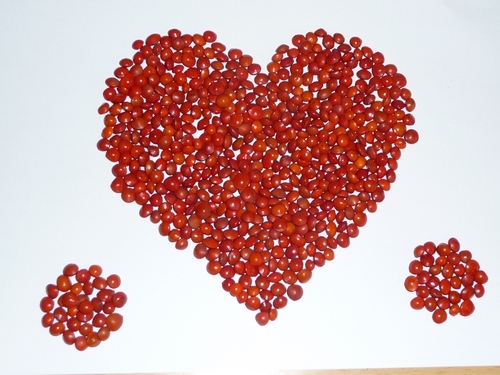Saga Seed Tree (Adenanthera pavonina )
Description
Medium- to large-sized deciduous tree, it can grow to a height of 20 m. It has a rounded crown and smooth, greyish bark that turns flaky with age. It is hardy and fast-growing. Leaves are twice pinnate, 10-40 cm long, with 2-6 pairs of side-stalks, each with 9-15 pairs of oblong-elliptic, 1-4 x 0.7-2.5 cm leaflets and a terminal one. Flowers are bisexual, 2 mm long, star-shaped, cream-yellowish, growing in dangling flower heads that resemble cat tails. The flowers turn dull orange and have a faint orange blossom smell. The pods are curved and split into twisted halves when dry to expulse 8-12 bright red, hard, pill-shaped seeds
Range
India, Southeast China, Southeast Asia
General Biology
The Saga Tree grows well in neutral to slightly acidic soils.
Human Uses
The trees have been a type of popular ornamental tree and were planted along roadsides in Singapore during the 1970s to 1980s. Now it is planted more as a shade plant in parks and gardens.
The seeds are used as beads. Children would collect the seeds to make into playthings. Due to their consistent mass (4 seeds make up 1 gram), the seeds were also used in the past as weights in many parts of Asia for weighing gold and even silver.
The seeds are also known to possess medicinal value. Powdered seeds are made into plasters to quicken the ripening of boils and to cure headaches and rheumatism in India.
In Java, the seeds can also be roasted, shelled, and eaten with rice. If eaten raw, the seeds could cause intoxication. The young leaves are also edible once cooked.
The wood of the Saga Tree is a type of hardwood timber used in house-building and furniture-making. It is also used as fuel wood. In powdered form, heartwood can be used as red dye.
http://rmbr.nus.edu.sg/dna/organisms/details/408
http://www.naturia.per.sg/buloh/plants/saga_tree.htm



